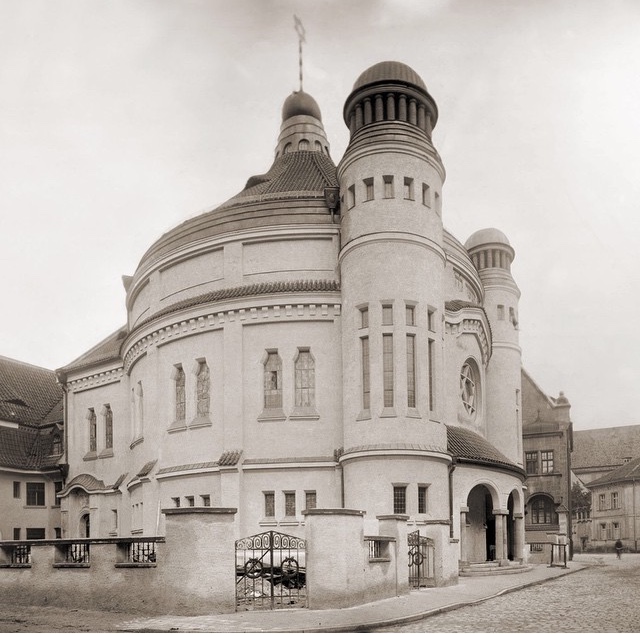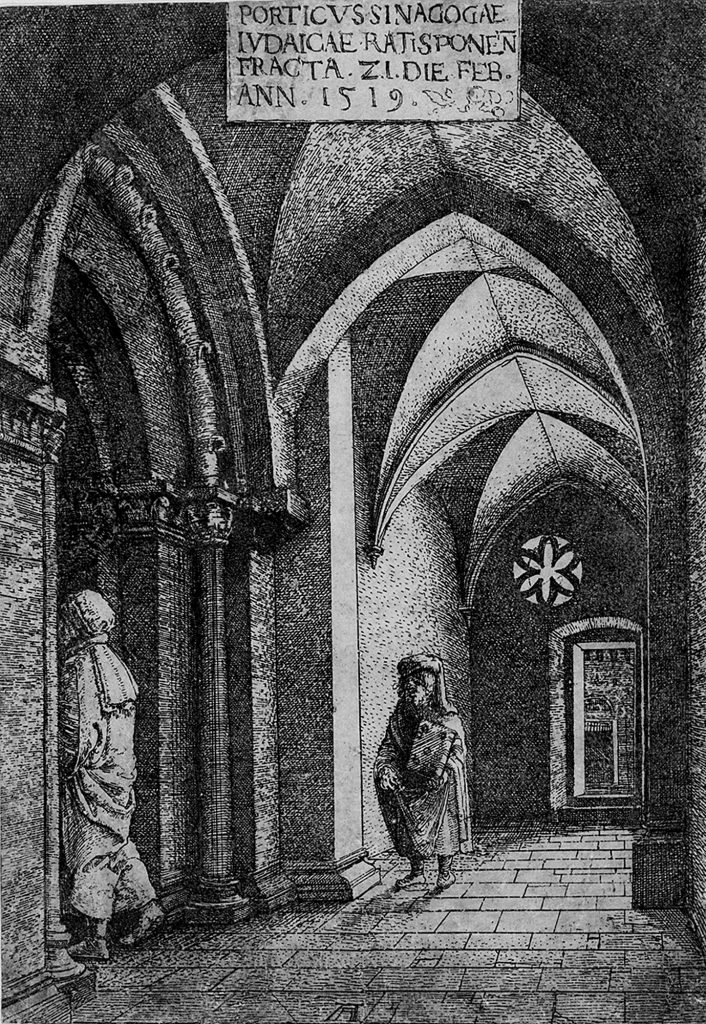The Jewish presence in Regensburg is very old, dating from the Middle Ages, probably around 981. A Jewish quarter existed there since the 11th century. In the 12th century they gained more freedom, especially in working life. In 1210, the construction of a synagogue was started and land for a Jewish cemetery was purchased. The synagogue was inaugurated a few years later and could accommodate about 300 worshippers. The town soon became an important centre of Jewish life, with its yeshivot. There was also a mikveh.

This development and the freedom that accompanied and motivated it, declined from the 14th century onwards. This development and the freedom that accompanied and motivated it declined from the 14th century onwards. The Jews were subjected to particularly heavy taxes, and their field of activity was limited. Due to financial and religious pressure, the 600 or so Jews were finally expelled in 1519. The synagogue was razed to the ground, and the gravestones of the Jewish cemetery were used for building works.
In the 17th century, Jews began to return to the city in small numbers. Jewish personalities participated in the intellectual and economic development of the region. In 1753, Isaac Alexander was the first officially appointed rabbi, officiating in a baroque building used as a synagogue . A new Jewish cemetery was purchased in 1822 and a synagogue built twenty years later, with a downstairs room for men and a balcony for women.
At its peak, the Jewish community consisted of 635 people in 1880. However, the poor condition of the walls forced the end of the use of this synagogue at the turn of the century. A 19th century mikveh was found as a result of archaeological excavations and is now located in a private residence.
At the beginning of the 20th century, the Jewish population declined, which of course continued when the Nazis took over in 1933. Thus, of the 81106 inhabitants of the city, only 427 are Jewish. Nevertheless, the cultural and religious city continued. The Judischer Kulturbund had 200 members and organised many events in the city.

Until 1937, the community functioned with a synagogue, a school, social and cultural associations, and a library, fighting in parallel against the anti-Jewish measures that accumulated over time.
The synagogue, a modern structure accommodating 500 worshippers and inaugurated in 1912, was burned down in 1938, a year that saw the flight of 268 Jews. The Crystal Night claimed many Jewish victims, as did the deportations that followed, notably the one in 1942 when 106 Jews were sent to extermination camps.
The community experienced a tentative post-war revival with the construction of a cultural centre in 1969, its population reaching 140 in a census a year later. This figure rose sharply to 1000 at the turn of the 21st century, largely due to the arrival of Jews from the former USSR.
Archaeological excavations in the 1990s near Neupfarrplatz, where the old Jewish quarter was located, uncovered numerous ruins of medieval buildings, some of which are linked to the Jewish history of the quarter.
In 2013, citizens, mostly non-Jewish, mobilised to rebuild the synagogue on the site of the old one. After many efforts by the local and regional authorities and private contributions, this project came to fruition in 2019, replacing the few small places that were in use.